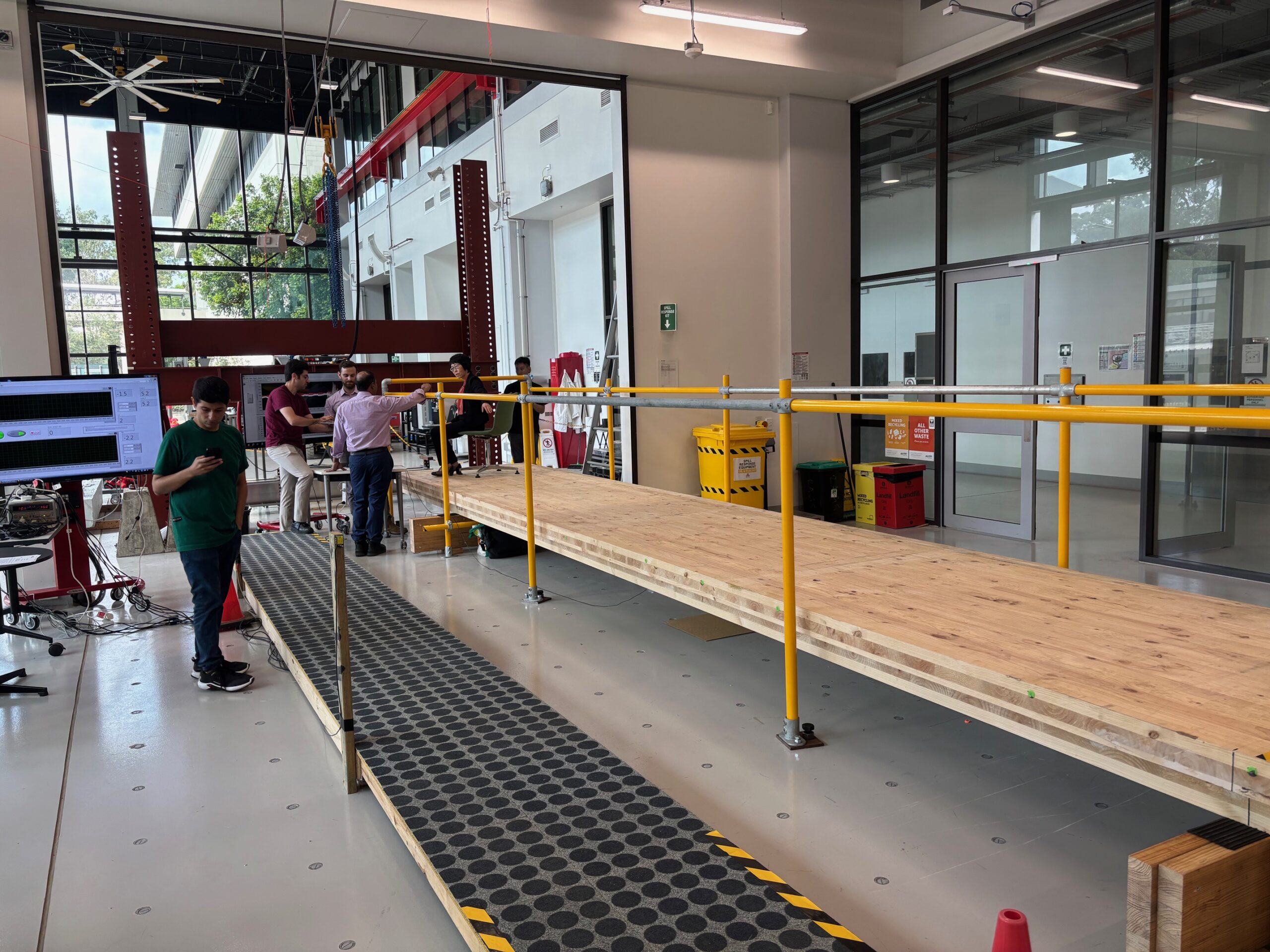15 April 2025 – Brisbane, Australia — The ARC Advance Timber Hub convened a highly engaging and collaborative workshop at Griffith University to showcase progress on the Node 1.1 project: Innovative Long-Span Timber and Wood-Based Hybrid Floors for Vibration Performance and Acoustic Compliance.
Led by Associate Professor Hassan Karampour and Professor Hong Guan of Griffith University, the event brought together researchers, industry partners and practitioners to exchange ideas, evaluate research findings, and explore future pathways in sustainable timber construction.
The workshop provided a deep dive into the cutting-edge research being conducted on the vibrational and acoustic performance of long-span timber floors.
Presentations and Research Highlights
The event commenced with a comprehensive project overview by A/Prof. Hassan Karampour, setting the stage for a series of focused presentations:
- Adam Faircloth, a PhD candidate, shared results from an initial scoping study outlining the project’s key objectives.
- Updates on Multinail laboratory and desktop studies were presented by A/Prof. Hassan Karampour, revealing advances in simulation and testing techniques.
- Adam Faircloth also delivered insights from XLam factory and laboratory tests, providing real-world data on structural performance.
- The session concluded with an overview of completed building tests and preparatory information for the workshop’s hands-on laboratory activities.
Collaborative Table Discussions
Participants engaged in roundtable discussions addressing vital research questions. Topics included:
- Design and modeling challenges in long-span timber floor systems
- Evaluating floor performance for serviceability
- Integrating industry feedback into academic research
These discussions fostered an open exchange of practical insights and academic perspectives, reinforcing the project’s real-world relevance.
Interactive Laboratory Activities
The highlight of the workshop was a set of two experimental lab sessions designed to capture both empirical data and human feedback:
Walking Platform Test
A specially constructed platform enabled participants to generate walking force data in real-time.
- Purpose: To record dynamic walking forces and refine force-time models used in vibration simulations.
- Outcome: The data collected will enhance prediction accuracy for floor serviceability performance evaluations.
Real Floor Vibration and Perception Test
A full-scale 9m long timber floor made of 5 layer CLT supported on glulam edge beams was instrumented with two accelerometers placed beneath the structure.
Setup: One participant sat on a chair while another walked across the floor.
- Measurements: Floor accelerations were recorded, and the seated participant was asked to estimate the perceived response factor.
- Objective: To combine objective accelerometer data with subjective human feedback, bridging technical and user experience evaluations.
Overall, the workshop was a resounding success, offering a dynamic platform for collaboration between academia and industry. The combination of research presentations, interactive discussions, and hands-on testing underscored the project’s commitment to practical, sustainable solutions in timber construction.
Griffith University provided an excellent venue for this engaging and impactful event, helping to foster meaningful connections that will continue to drive innovation in the field.

